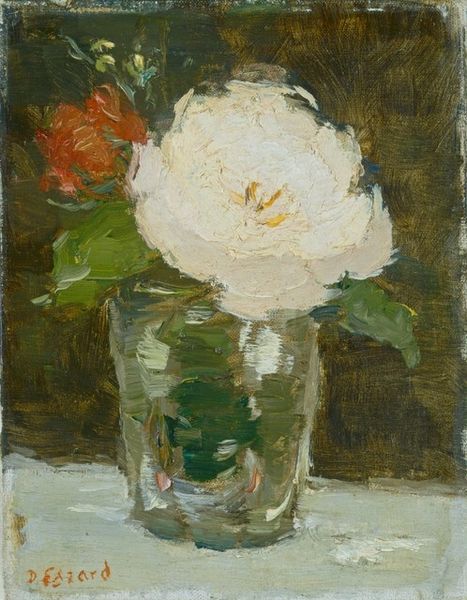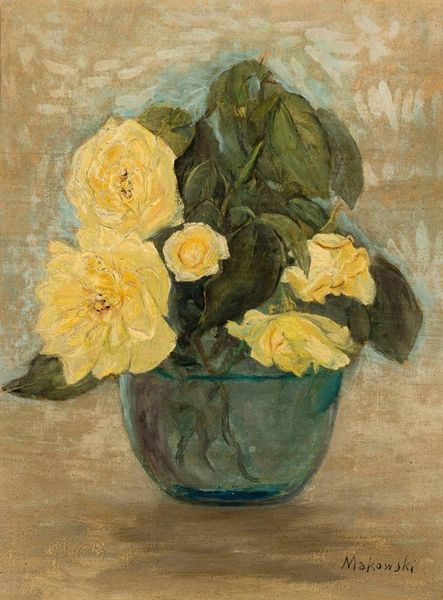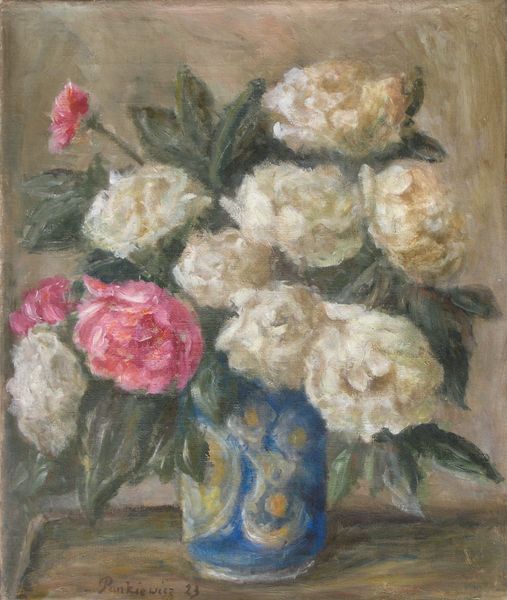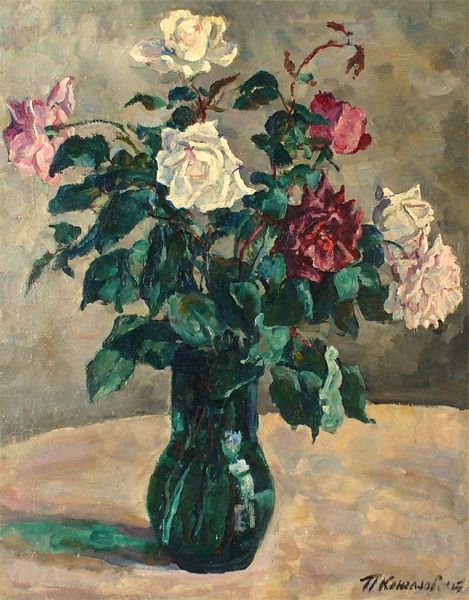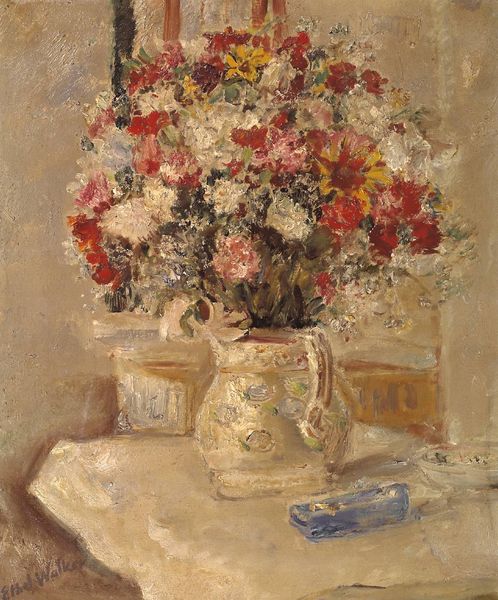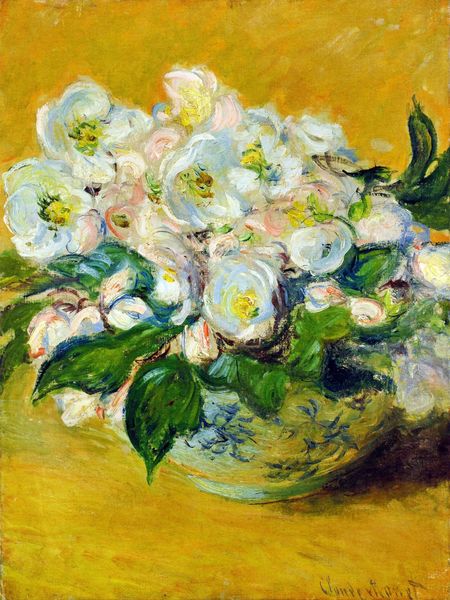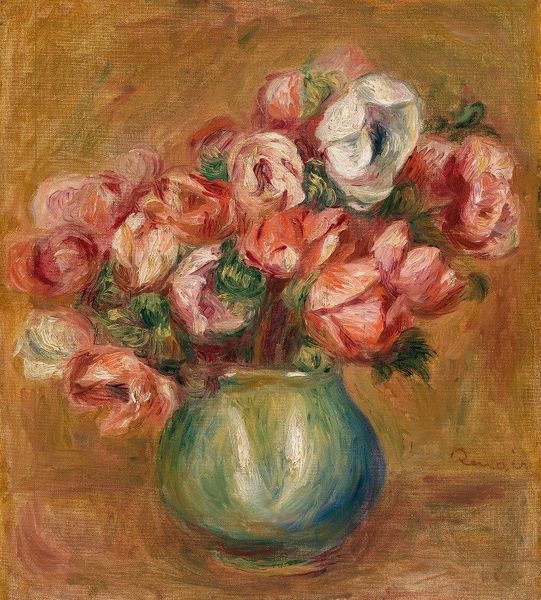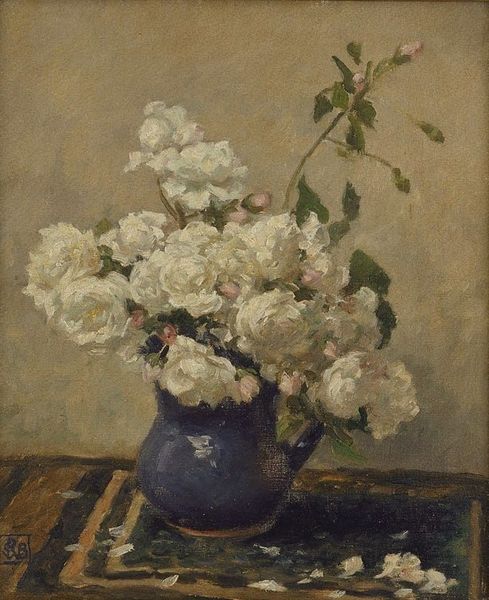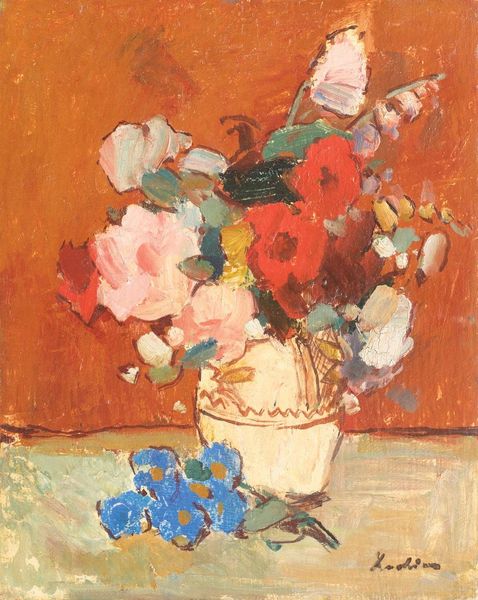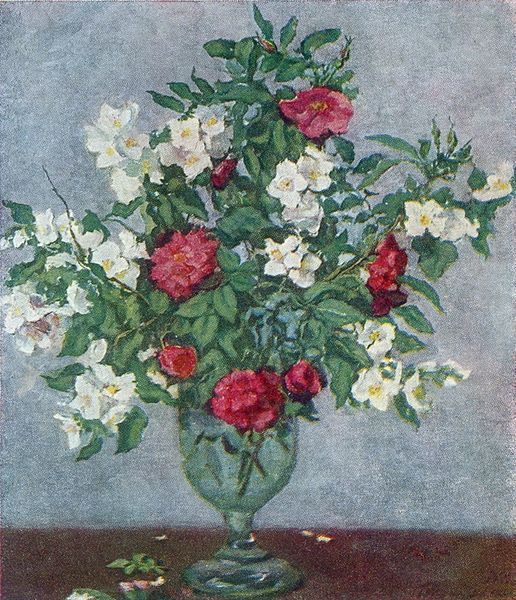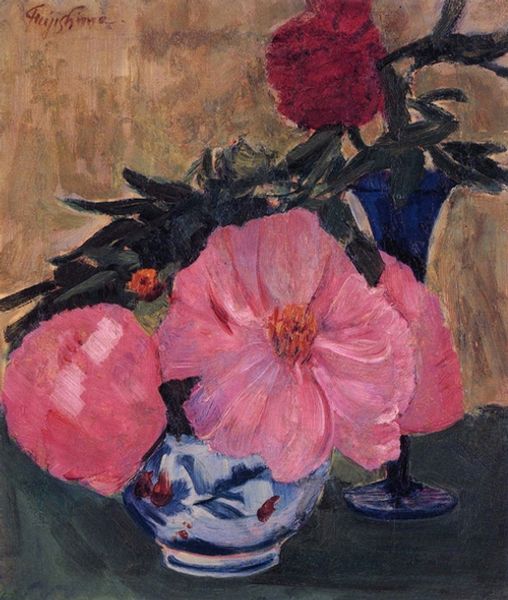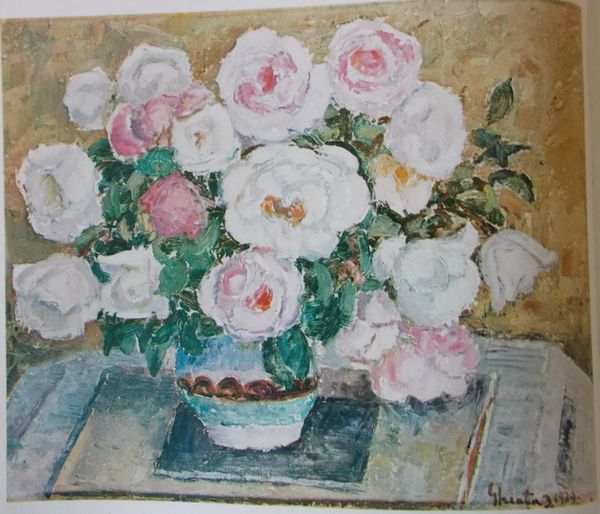
Copyright: Corneliu Baba,Fair Use
Curator: This is Corneliu Baba’s “White Peonies in Green Vase,” created in 1937. It's an oil painting, and it's a fantastic example of Baba’s still-life work. Editor: There’s something immediately comforting about it. The muted tones, the overflowing flowers. It feels like a scene from a beloved, if slightly faded, memory. Curator: Baba’s career began in a tumultuous time in Romanian history. Still life, like this, served many Eastern European artists during the Socialist Realism era as a space for artistic exploration outside the confines of political subject matter. Did flowers carry a kind of… silent protest, do you think? Editor: Absolutely! Flowers, particularly white ones, are deeply symbolic. Innocence, purity, but also remembrance and mourning. The fullness of the peonies in this vase seems to symbolize abundance but, perhaps also, fragility. Given the context, that fragility feels quite poignant. Curator: Notice, too, the impasto technique. The thick application of paint gives the petals texture and almost makes them look like they’re about to burst forth from the canvas. It mirrors the burgeoning artistic voices trying to break through during that era. Editor: It also draws attention to the physical act of creation. The flowers become a representation, not just of beauty, but of the artist’s own struggles and triumphs as he navigates political boundaries in representing visual forms. Curator: Considering it’s a still life, the painting has an amazing vitality. Perhaps that's because the art-historical association of flowers, as a silent language of their time, gave strength and visual energy to artists such as Baba to pursue their own creative interpretation despite external limitations. Editor: It really prompts reflection on the power of imagery and its cultural endurance. You begin to appreciate its lasting impressions as if their influence stretches out towards eternity. Curator: This examination has opened my eyes even further. It goes to show the value of artistic integrity to express individual thoughts despite possible external pressures. Editor: Indeed. The beauty of Baba’s work lies in its subtle ability to convey meaning that transcends eras and constraints, doesn't it?
Comments
No comments
Be the first to comment and join the conversation on the ultimate creative platform.
